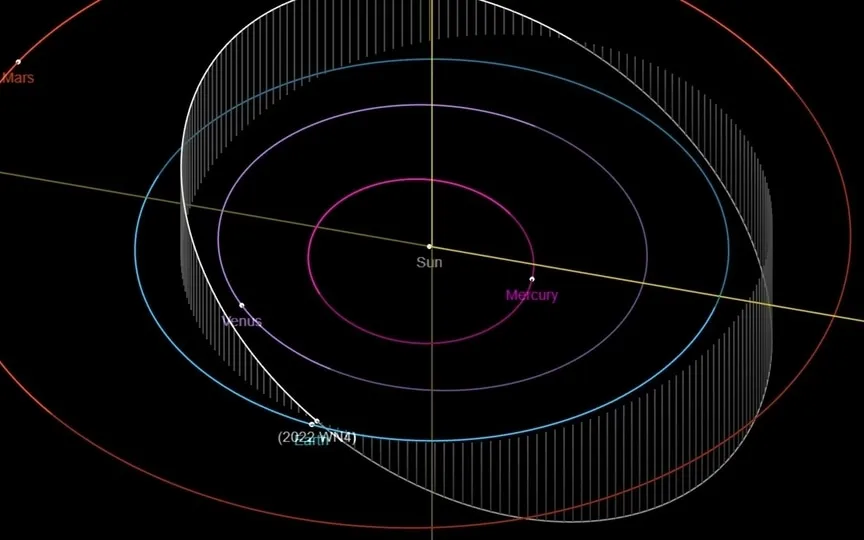Asteroid Larger than Statue of Liberty Speeding Toward Earth
The Center for Near-Earth Object Studies (CNEOS) is situated at JPL and collaborates with the Planetary Defense Coordination Office at NASA Headquarters in Washington to analyze the paths of near-Earth asteroids. CNEOS conducts extensive research on the collected data, anticipates the asteroids’ proximity to Earth, and evaluates the potential impact risks to reduce the ambiguity surrounding their course in space.
The increasing number of near-Earth asteroids has made it necessary for space agencies like NASA and ESA to keep track of them, and another is due to pass close to Earth today. Check out the details of the asteroid here.
Asteroid 2022 WN4 details
According to data revealed by NASA, the asteroid, known as Asteroid 2022 WN4, is close to Earth and traveling at 54,272 kilometers per hour. It will make its closest approach to Earth today, June 13, at a distance of 4.1 million kilometers.
It belongs to the group of Apollo asteroids, which are Earth-passing space rocks with semi-major axes larger than Earth’s. They are named after the Apollo asteroid of 1862, which was discovered by German astronomer Karl Reinmuth in the 1930s.
Asteroid threat – is it dangerous?
NASA estimates it to be about 450 feet wide, making it almost the size of a skyscraper. In fact, it’s even bigger than the Statue of Liberty! Although NASA scientists estimate that an asteroid would need to be about 60 miles (96 kilometers) wide to completely and utterly destroy life on Earth, smaller asteroids like Asteroid 2022 WN4 can also cause some damage. For example, the asteroid that exploded over the city of Chelyabinsk was only 59 feet wide. When it exploded, it damaged nearly 8,000 buildings and injured more than 1,000 people.
These close encounters with asteroids underscore the importance of continued technological advancements in asteroid detection and tracking programs to help ensure our planet’s safety from the potential impacts of these space rocks.




